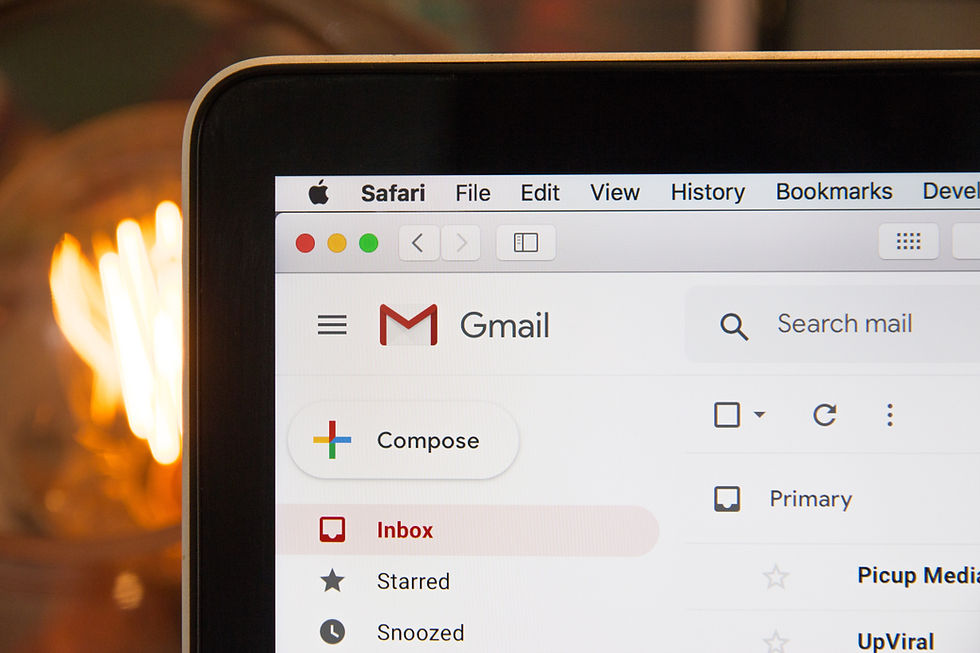Top tips for email signature branding
- Jo Evans
- Jun 29, 2016
- 3 min read
Updated: Oct 18, 2023

Clear, and succinct branding is vital to get your company’s message across, to make your brand recognisable. Email signatures are one way to complete the look of not only your company’s branding, but your personal branding.
Email signatures are one aspect – and you may be making some trivial mistakes with them, that you don’t even realise. We’ve nailed down a 10-point checklist for when it comes to designing and implementing your signature.
Promotional attachments – attaching documents, PDF’s, images, and so on with every customer communication can brew annoyance and cause your emails to become ignored. Instead of showering them with attachments, include a link to your website where they can download the information themselves should they choose to do so.
Font styles and use – font has to be considerate towards styles and sizes; it’s distracting and confusing to read a signature that has either too small or too big a text, as well as a mixture of colours and formatting, such as bold or italic. Again, to promote a succinct and consistent brand, the font must be clean, professional, consistent and tidy. Your font choices should reflect the market your branding is directed to. TIP: this also applies to fonts that aren’t found readily on the web, and when a fall-back font hasn’t been specified. It overcomplicates the signature and means that different customers will see your branding in different formats – best to keep to the status quo for this one.
Colours – Instead of throwing all your favourite colours and shades into your signature, limit it to just one colour from your branding, and possibly pair it with a subtle shade like dark grey or black to emphasis the visual impact. It looks clearer as well as professional, stylish and well-designed, rather than chaotic and busy.
Email banner images – it is important to make sure that you aren’t overloading the signature with a billion promotions you can offer your customers. Keep it sweet and simple, with a maximum of four promotions or images at any one time, all at the base of your signature. TIP: Google Analytics is a handy tool to check what customers click through, where they land, and what they’re searching for. Test the promotions for conversions using Google Analytics click tracking. Don’t be afraid to test different images to see which ones convert more clicks, as it’s one simple way to drive traffic to your website.
The personal in the professional – make sure, unless you’re a blogger or writer, that you don’t include any personal quotes, jokes or snippets of information, as not every customer with agree, understand and could potentially get offended. This also disrupts the cohesion of your professional branding.
Images – primary images like logos and profile images are useful in email signatures, as they directly link you with your company and branding. Keep it simple with no more than two of these images, and make sure they are small, neat and trimmed (no larger than 250px for height and width) as again this may affect the download ability of the email and put off potential leads and customers. TIP: this also applies for signatures with just an image, with only a specific clickable area. It overcomplicates the click-through process and may direct your customer in the wrong direction.
Legal Disclaimers – make sure you identify whether your signature needs a disclaimer at all (typically if you are sending private information over email, a disclaimer is necessary) and if you do, include selected, critical information with a link through to the full copy. This keeps your signature clear of babble and easy to identify you and your company.
Testing your email signature – Emails are opened across all sorts of devices nowadays, and so it is vital to ensure you have created an email signature that contains HTML that is cross-compatible with all these interfaces. Spread it over multiple account tests as well, just to be safe that there are no disruptions. Test, test, and if unsure, test again.
Social Media – social media rules the school when it comes to online interaction, and so it is important to let your customers know if there are social media pages out there that they can follow you or your company on. The icons eliminate the need for lengthy links, and it promotes the ease of access to your company that will attract customers to your brand.
Image hosting – Images that aren’t hosted on a web server appear as attachments, which clogs up your customers’ inbox with downloadable files and leaves you with the same issue as promotional attachments. Make sure you host, so that it doesn’t clutter your email and your customers email.
Image courtesy of Stuart Miles at FreeDigitalPhotos.net



